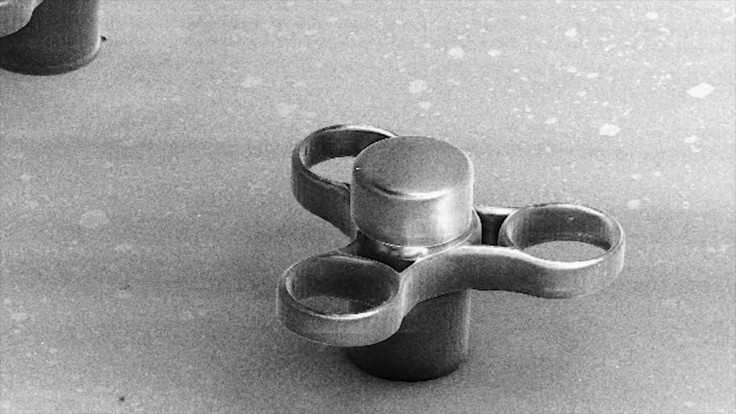Watch the world's tiniest fidget spinner that's smaller than a human hair in action
The project was a demonstration of the unique facilities that are available to scientists and researchers at ORNL.
Scientists from the Oak Ridge National Laboratory's (ORNL) Center for Nanophase Materials Sciences have successfully 3D printed the world's smallest fidget spinner. It measures 100 microns wide or one-tenth a millimetre.
The project was a demonstration of the unique facilities that are available to scientists and researchers at the lab and it is reportedly open to any team of researchers to use, notes a report by Phys.org. The capabilities that such facilities present to research are enormous.
The nanoscribe machine that "printed" the spinner can also be used to create microfluidic and micromechanical devices.
According to the report, by using focused laser the instrument converts a liquid into a solid at a microscopic level.
This 3-D printing-like process allows scientists to design and create complex designs to make "functional microscale devices with moving components".
The video describes the process in detail.
First, the design is created on a Computer Aided Design (CAD) program. The CAD file is then digitally sliced into layers similar to the way 3D printing is done. The slices, when stacked up, reveal the device.
After the design is finalised, the specialised liquid is added to a piece of "silicon wafer". The video shows that only one drop is used for the process. It is then loaded into the nanoscribe machine.
The laser that is used to convert the liquid to solid will only work at it its strongest, most concentrated point, described by the researcher as its focal point.
Much like the way a 3D printer uses its squirt nozzle, the laser in a nanoscribe machine rasters its way through the liquid, creating the required pattern, making the liquid a solid.

Adam Rondinone of the ORNL said that his team, "felt like it would be an interesting demonstration for younger people who may not know that the federal government maintains these user facilities around the country, which anybody can use as long as they submit a successful proposal."
The report mentions that the lab is free to use so long as results of experiments run there are published as open literature.
"Our job is to offer cutting-edge experiments, instrumentation and expertise, to help other scientists to achieve their goals," Rondinone said. The team now plans to build an interactive version of the microscopic fidget spinner for the ORNL Traveling Science Fair.





